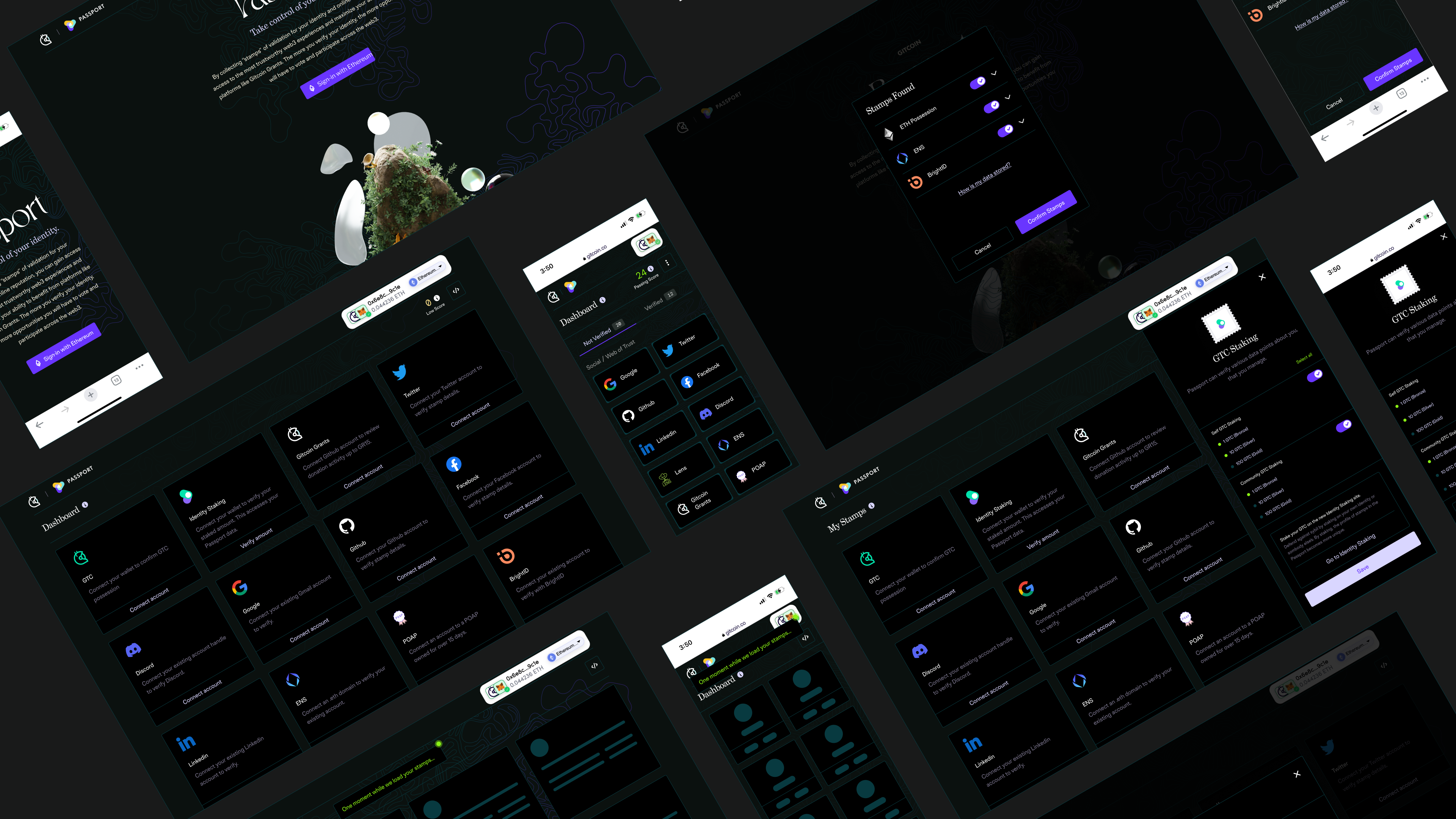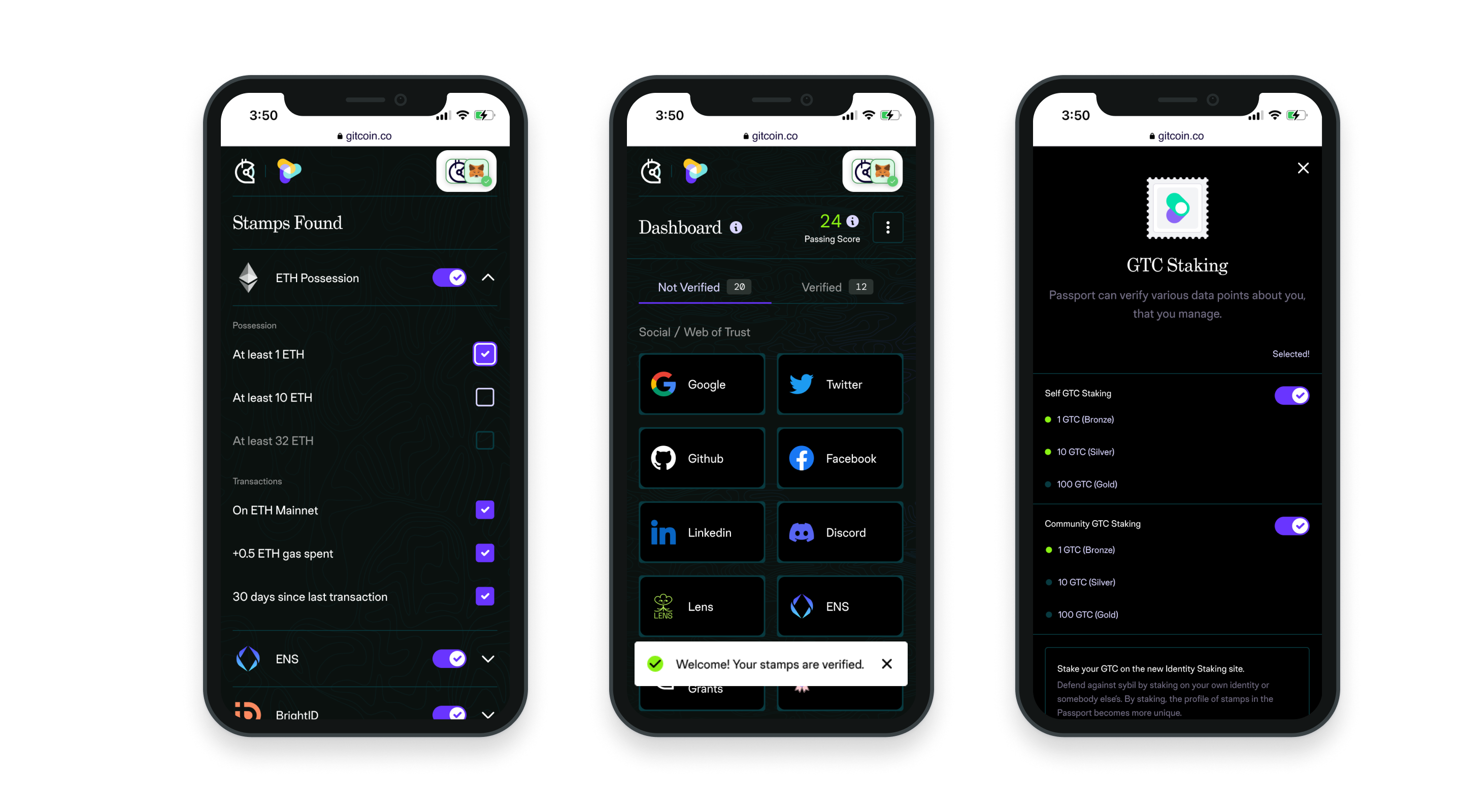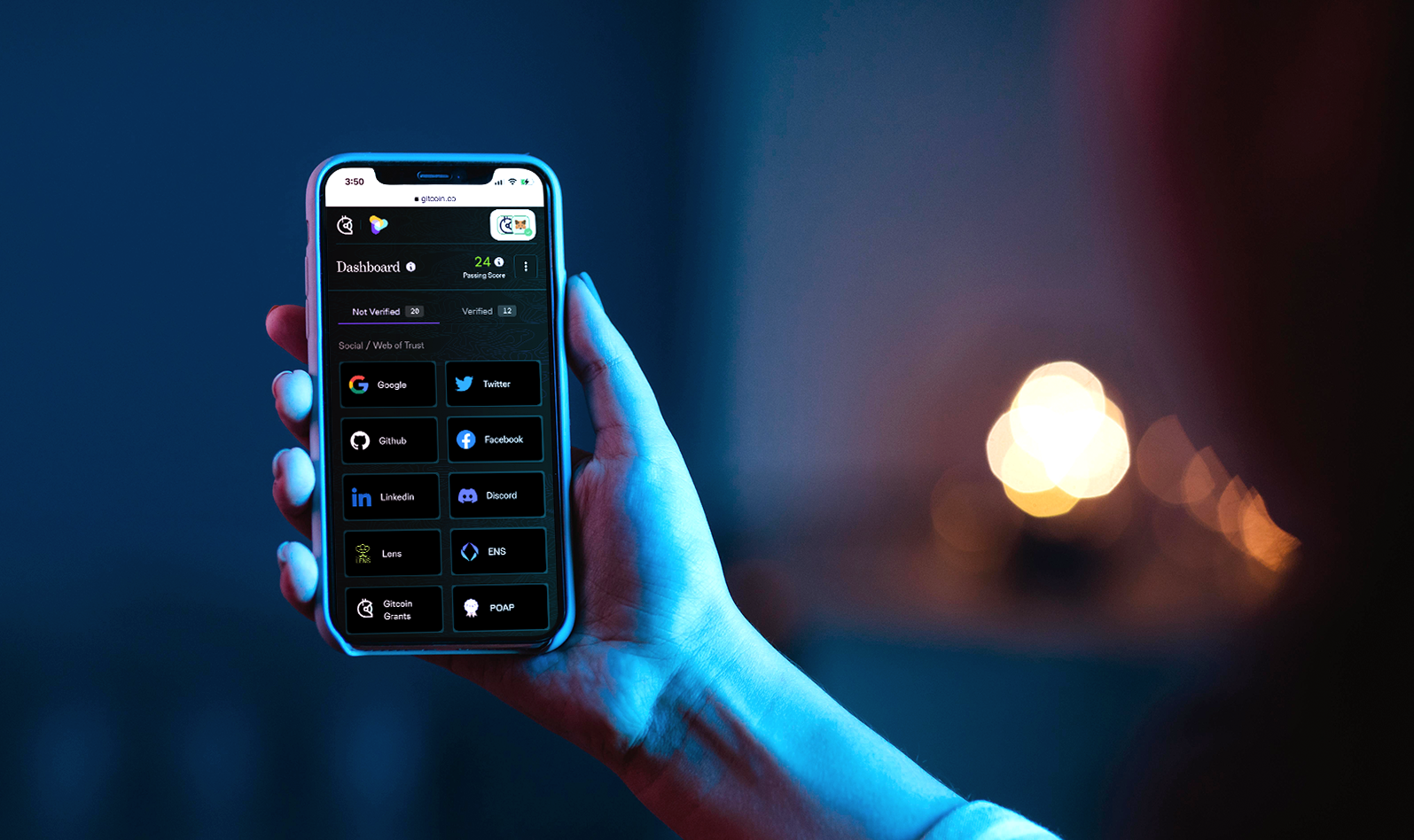The Gitcoin Passport allowed users to verify Stamps which consisted of KYC, asset ownership, purchase statements, reputation badges, community votes, financial status, credentials, or provenance. We then experimented with different ways to display progress and incentivize user to verify more Stamps through gamification. We landed on the idea of a unique humanity score which could be used to allow passing users into a specific DAO or community.
This gamified reframing brought massive engagement with thousands of new and existing users creating Passports to collect Stamps to fund their favorite projects.
.png)



